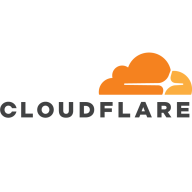


Azure Front Door and Check Point CloudGuard WAF are key players in the cloud-based application security market. Azure Front Door tends to have an advantage in terms of simplicity and cost-effectiveness, while Check Point CloudGuard WAF seems superior in advanced security capabilities.
Features: Azure Front Door offers SSL offloading, global scalability, and seamless integration with various web application firewall policies, providing solid load-balancing to enhance security and performance. Check Point CloudGuard WAF presents features such as an Intrusion Prevention System, AI-driven threat insights, and comprehensive bot protection, ensuring high-grade application security.
Room for Improvement: Azure Front Door could improve by offering better support for hybrid environments, clearer product definitions, and reduced latency. Its pricing structure also requires refinement for more competitiveness. Check Point CloudGuard WAF faces challenges with latency issues, the need for more comprehensive documentation, improved customer support, and a less complex pricing model.
Ease of Deployment and Customer Service: Azure Front Door is recognized for its easy setup in cloud environments and generally supportive customer service, though opinions on support quality can vary. Check Point CloudGuard WAF allows for flexible deployments across different cloud setups yet encounters delays in support and portal performance issues, with room for enhancing language support and documentation.
Pricing and ROI: Azure Front Door is appreciated for its cost-effective pay-as-you-go model, offering good ROI especially when integrated within the Azure ecosystem. On the contrary, Check Point CloudGuard WAF, though more expensive, provides extensive security features justifying the cost for many users, with varied ROI based on specific business needs.
WordPress security can be tricky, and that's where Cloudflare can be absolutely helpful for small businesses.
For the small project I was working on, using the basic tier provided a huge improvement at zero cost.
Azure Front Door offers a quick return on investment once it is set up.
When we are attacked, we can understand how important the solution is.
When you migrate to the cloud, it feels like saving 90% of your time.
Most of the operations happen in the background, so I do not spend much time on it.
This would help us address issues promptly, especially during unforeseen events like DDoS attacks.
Cloudflare does not offer hands-on technical support to fix customer problems but rather a self-service model.
The key factor is the language in which the support is offered, which, in this case, is in Thai.
I am able to set up a critical call with Microsoft, and they respond quickly to tickets with the highest severity.
They need to increase the number of people for 24/7 support.
They were responsive even before we committed to buying their solution.
I also received full technical support, especially during the implementation.
It is a SaaS tool, but the fact that they have workloads deployed across the world proves that it is a highly scalable tool.
The tool offers very good performance, even during high-traffic periods.
I rate the solution’s scalability an eight out of ten.
I find that Front Door can become expensive for large-scale projects with more transactions and users.
I consider the scalability of Azure Front Door to be strong.
If I need to scale, I open a Whatsapp group with the director and the team, and we quickly proceed to do so.
They have sufficient resources, and there are no challenges from a scalability perspective.
It handles increasing traffic easily because we can extend our demands based on our needs.
For DDoS protection, I would not recommend Cloudflare.
I rate the solution’s stability an eight out of ten.
The service is very stable with no impacts during high-traffic periods.
I rate Azure Front Door's stability a nine because it is easy to make updates through Azure Portal.
It is very stable.
It is very stable, never crashing or giving me an error that I can see.
I did not have any issues in the last three years during which I had more than ten critical services running on CloudGuard.
There's a need for improvement in areas like AI-based DDoS attacks and Layer 7 WAF features.
Despite these challenges, overall, Cloudflare remains the preferred solution compared to Azure, AWS CloudFront, and Google Cloud Armor.
The timing aspect can lead to it being considered overpriced. This is a particular concern we have with Cloudflare, as they may struggle with accurately detecting the client.
If I could use Azure Front Door with private IP addresses, it would be more beneficial.
It relies on the WAF module where users must configure rate-limiting rules, as it does not automatically sense malicious spikes in traffic.
The only significant adjustment required is with URL set parameters that need to be passed for an existing domain.
The provider could improve by providing better guidance and support during the configuration process.
It's not something you manipulate, it's not an antivirus where you deal with signatures, updates, and upgrades every day.
I would say that the more automation this product has, the easier it will be to work with it.
That's where Cloudflare shines for smaller businesses – it's ten times cheaper than Akamai.
I find it to be cheap.
I think they should consider reevaluating the pricing for support, as it can be quite high.
Azure Front Door is cheaper for small projects, companies, or applications compared to using separate tools.
It is more expensive than f5, where we purchased everything as bundles, and Check Point costs more, but it is worth the money.
It is less costly than Cloudflare, Fortinet, and other vendors.
I know that its price is relatively expensive compared to other products but it gives benefits that are worth it.
The most valuable features of the solution are performance and security.
Techniques like minification and image compression reduce the size of assets, leading to better performance and faster user load times.
The solution has been able to compare it to the market, and I think the product has taken great strides in automating quite a bit of things, and they use a lot of AI.
Azure Front Door provides DDoS protection and features related to WAF.
Azure Front Door includes a built-in web application firewall, which performs signature-based checks of the request payload, offering protection against common attacks or malicious requests.
Upon implementation and evaluation with third-party penetration testing, it meets rigorous security standards required for dealing with financial institutions.
It can protect against zero-day attacks and hidden anomalies.
The solution preemptively blocks zero-day attacks and detects hidden anomalies effectively.



| Company Size | Count |
|---|---|
| Small Business | 45 |
| Midsize Enterprise | 8 |
| Large Enterprise | 25 |
| Company Size | Count |
|---|---|
| Small Business | 9 |
| Midsize Enterprise | 1 |
| Large Enterprise | 9 |
| Company Size | Count |
|---|---|
| Small Business | 25 |
| Midsize Enterprise | 18 |
| Large Enterprise | 16 |
Cloudflare is a highly-regarded Content Delivery Network (CDN) and a Distributed Denial-of-Service (DDoS) protection solution. The robust global connectivity cloud platform that is Cloudflare ensures users are able to connect to the Internet quickly, securely, and reliably. Cloudflare is one of the world's largest networks in the marketplace today. Using Cloudflare, businesses, educational entities, NGOs, vloggers, bloggers, and anyone else with an internet presence can experience more secure, faster websites and applications.
Currently, there are millions of Internet locations on Cloudflare, and the Cloudflare network
continues to grow every day by the thousands. The solution is able to fulfill the requests for
millions of websites seamlessly and serves on average 45 million HTTP requests per second.
Cloudflare has safe, secure data centers in close to 300 cities worldwide to ensure every
client request is filled as quickly as possible. It is Cloudflare’s edge network that makes this
possible by keeping content and other services as close to each client as possible, so the
information requests are always only seconds away.
Many organizations that work in democracy, civil society, human rights, or the arts are able to
access Cloudflare's highest levels of protection for free via Project Galileo. Additionally, official
election websites can be secured from hacking and fraud through Cloudflare’s Project
Athenian, also at no additional cost.
Cloudflare can also help organizations of all sizes develop a robust zero-trust strategy to
ensure the highest levels of productivity and profitability. Employees, stakeholders, and end users have a greater level of satisfaction and overall improved user experience, which can, in
turn, result in higher revenues and overall ROI. Zero-trust and BYOD (bring your own device)
access ensure end users and employees always have the best resources and technology
available to them at all times.
Cloudflare benefits
Cloudflare has many benefits. Some of its most valuable benefits include:
- Faster load times
- Robust DNS security
- Intuitive cloud Web Application Firewall (WAF)
- Free universal SSL
- Image enhancement
- Automatic browser caching
- Next-generation cloud load balancer
- Accelerated Mobile Pages (AMP)
- Rate limiting
- Minification
- Zero-trust capabilities
- Cost-effective
- Reduced carbon footprint
Reviews from real users
“Many websites require an SSL certificate because they sell stuff and want SSL. Cloudflare
comes with an SSL certificate built in. It's automatic. You sign yourself up for Cloudflare, and
an SSL certificate automatically protects your website. If you have a connection between your
website and your host, the server, Cloudflare, and the host, you don't necessarily need a
certificate.” Spencer M., Owner at Tech Exchange
“What I like best about Cloudflare is that my company can use it to trace and manage
applications and monitor traffic. The solution tells you if there's a spike in traffic. Cloudflare
also sends you a link to check your equipment and deployment and track it through peering,
so it's a valuable tool.” Daniel P., Network Engineer at Ufinet
“The most valuable feature of Cloudflare is the GUI. You are able to control the solution very
well through the interface. There is a lot of functionality that is embedded in the service.” PeerSpot user, Competence Center Manager at a tech services company
Azure Front Door enhances web application performance and security by leveraging traffic inspection, SSL offloading, and a web application firewall. It enables intelligent routing, load balancing, and global resource deployment while providing essential features for online application security.
Azure Front Door integrates GitOps for seamless deployment, offering significant capabilities in giant networks like CDN functionalities and DDoS protection. Its advanced configurations include traffic analytics and transit layer security. Despite its affordability and scalability, users see room for improvement in global load balancing and private IP address support, citing integration challenges with other cloud vendors. The interface may appear complex, and some users desire more transparent pricing, better DDoS defenses, and enhanced monitoring. This platform is especially beneficial for securing external traffic and optimizing content delivery, providing DNS integration and disaster recovery mechanisms.
What are the key features of Azure Front Door?In industries focusing on online presence and global user engagement, Azure Front Door is invaluable for optimizing web application performance. E-commerce platforms deploy it to secure transactions and enhance load times. Media companies leverage its CDN and security features to ensure seamless content delivery. Enterprises with international operations find it crucial for reliable and secure data access across regions.
Check Point CloudGuard WAF offers advanced security for web applications and APIs with features such as intrusion prevention, bot prevention, and AI-driven threat detection, ensuring organizations achieve high-level protection and efficient security management.
Check Point CloudGuard WAF integrates with APIs, providing a seamless security enhancement while reducing false positives. Its scalability supports rapid deployment, valuable for companies aiming to secure resources in clouds like AWS and Azure. Enhanced threat prevention, comprehensive compliance support, and advanced threat protection methods such as SQL injection and cross-site scripting prevention are key strengths. Despite its robust capabilities, there are opportunities for improvement, such as lower costs, improved third-party tool integration, and a more intuitive interface to enhance usability.
What are the key features of Check Point CloudGuard WAF?Check Point CloudGuard WAF is predominantly applied within industries requiring stringent security standards, such as financial services, healthcare, and e-commerce. Its deployment strengthens the defense of critical APIs, facilitates compliance, and supports efficient multi-cloud security management, aligning well with evolving industry demands.
We monitor all Web Application Firewall (WAF) reviews to prevent fraudulent reviews and keep review quality high. We do not post reviews by company employees or direct competitors. We validate each review for authenticity via cross-reference with LinkedIn, and personal follow-up with the reviewer when necessary.